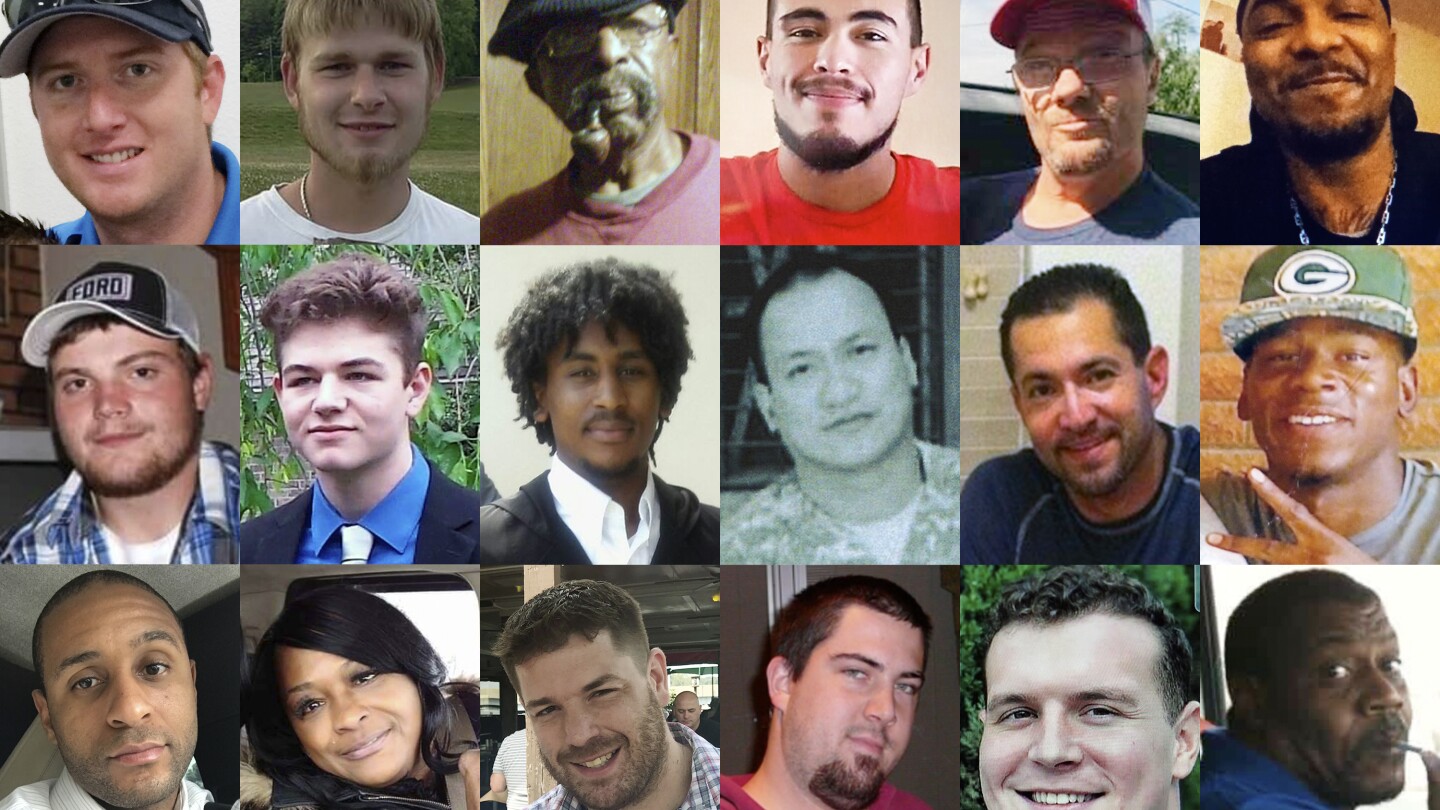Carl Grant, a Vietnam veteran with dementia, wandered out of a hospital room to charge a cellphone he imagined he had. When he wouldn’t sit still, the police officer escorting Grant body-slammed him, ricocheting the patient’s head off the floor.
Taylor Ware, a former Marine and aspiring college student, walked the grassy grounds of an interstate rest stop trying to shake the voices in his head. After Ware ran from an officer, he was attacked by a police dog, jolted by a stun gun, pinned on the ground and injected with a sedative.
And Donald Ivy Jr., a former three-sport athlete, left an ATM alone one night when officers sized him up as suspicious and tried to detain him. Ivy took off, and police tackled and shocked him with a stun gun, belted him with batons and held him facedown.
Each man was unarmed. Each was not a threat to public safety. And despite that, each died after police used a kind of force that is not supposed to be deadly — and can be much easier to hide than the blast of an officer’s gun.
Every day, police rely on common tactics that, unlike guns, are meant to stop people without killing them, such as physical holds, Tasers and body blows. But when misused, these tactics can still end in death — as happened with George Floyd in 2020, sparking a national reckoning over policing. And while that encounter was caught on video, capturing Floyd’s last words of “I can’t breathe,” many others throughout the United States have escaped notice.



Also, why is all harm short of killing someone considered acceptable when police do it?
Yup. The average person would be charged, but qualified immunity means these assholes have carte blanche to murder at will.
As always, ACAB.
A lot of statistics about dangers in society seem to be entirely centred around deaths. Which is understandable of course, but underplays the many other harmful outcomes that can occur short of that.
You could argue very convincingly that some non-fatal injuries lead to a fate worse than death.
deleted by creator
The idea is to offload violence from the society to the police (to give lawful monopoly on violence to the police). The alternative is wild west where everyone can do policing/violence as they see fit.
Granted that the policing should always be scrutinized and improved as needed, having completely “defund police” is not something we want to do.
My point is that conferring such enormous authority and power without enormous responsibility and accountability (and careful selection and training) is a mistake.
I’m 99% certain there are other possibilities in between the two extremes.
As I understand it, the “defund the police” movement is not about abolishing police. (And is a bit off topic, so I’ll save that discussion for another time.)
May be you think “defund police” is actually train police or create additional department of people who can deal with things mentally ill (both of it costs money, the opposite of “defund”) but I bet most of the people do not think so, and treat “defund police” and ACAB exactly as it sounds.
In any case I have answers a very specific question in my previous post.